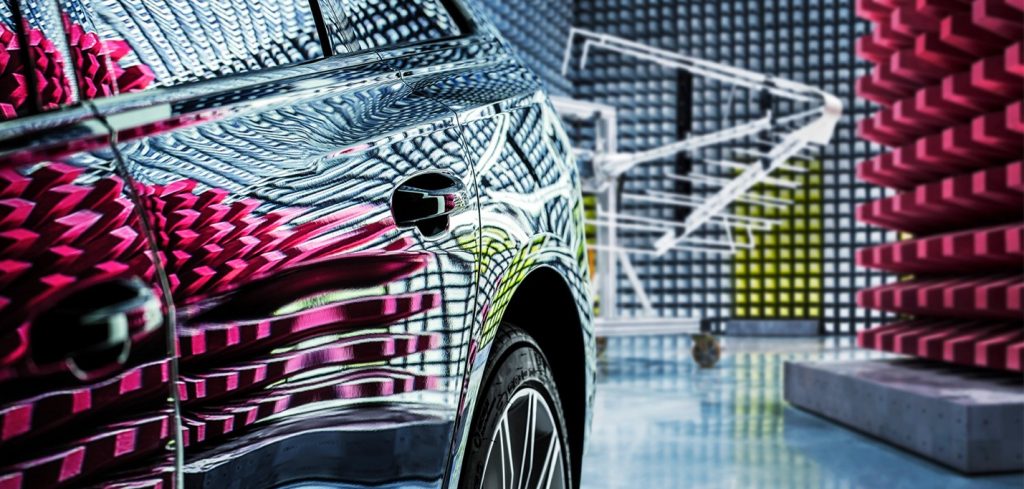The China Automotive Technology and Research Center (CATARC) has selected Rohde & Schwarz to supply a full-vehicle antenna test system.
Today’s vehicles support a multitude of wireless standards requiring high-performance antennas, such as satellite navigation (GNSS), tire pressure monitoring systems (TPMS), keyless entry (for example, UWB) and cellular connectivity (4G, 5G).
A key challenge for Tier 1 component suppliers and OEM vehicle designers is ensuring the optimal performance of individual antenna modules and entire vehicles, after these systems have been integrated. This is a particularly demanding task, because the material and shape of a vehicle body affects antenna performance, and different standards often use similar frequency bands.
With these demands in mind, test equipment manufacturer Rohde & Schwarz says it is supplying a turnkey solution for full-vehicle active and passive antenna tests to the CATARC (Tianjin) Automotive Engineering Research Institute. The company states its solution includes a full anechoic over-the-air (OTA) test chamber, a turntable, an antenna gantry and vehicle lift, a TS8991 test system and AMS32 OTA measurement software.
Furthermore, the company says it is providing project services such as system engineering, training, on-site installation and calibration to help its client characterize the entire vehicle antenna radiation pattern in 3D, facilitating optimal positioning and integration of antenna modules and supporting validation as well as certification of antenna systems in a controlled RF environment.
Rohde & Schwarz market segment manager, automotive, Ralf Oestreicher, commented, “We are seeing increasing demand for reliable full-vehicle antenna testing as the automotive industry strives to ensure connectivity, efficiency and vehicle safety.”
The company notes that its over-the-air (OTA) test systems provide passive and active OTA antenna measurements, through the use of a single probe setup with high measurement accuracy and an optional extension of the frequency range to millimeter wave bands.
This approach, its claims, was made possible thanks to the development at the Technical University of Munich of an innovative near-field to far-field (NF-FF) transformation algorithm, called fast irregular antenna field transformation (FIAFTA), which has been integrated into the AMS32 unit.
The algorithm ensures that the antenna pattern of the full vehicle can be obtained in a relatively compact test environment such as an anechoic chamber rather than the real far-field range length of hundreds of meters. This feature allows extrapolation of results in areas where mechanical constraints or reflections make measurements impossible. The CAD shape of the vehicle can also be imported into the analysis software.


